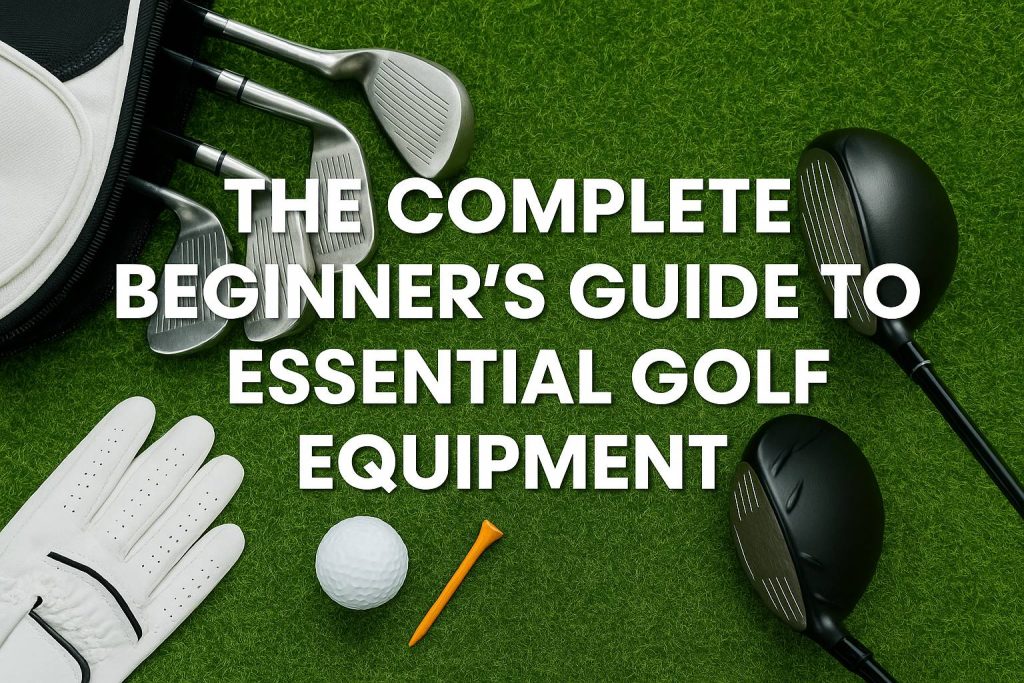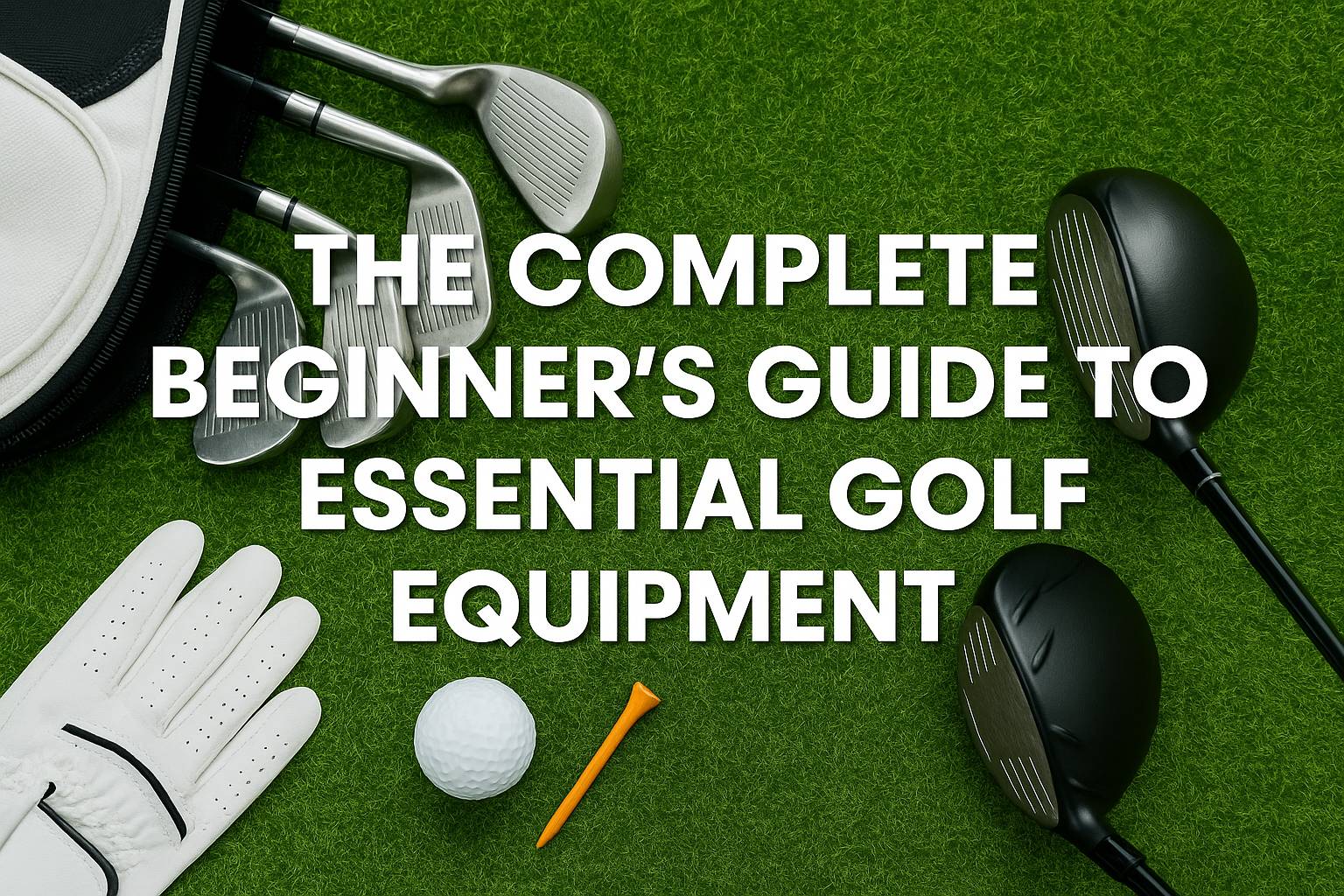Embarking on your journey as a beginner golfer can feel daunting. Not only do you need to understand the rules, etiquette, and playing techniques, but also equip yourself with the right set of golf gear. For many newcomers, choosing the right golf equipment can be confusing due to the sheer variety of types, specifications, and price ranges available.
That’s why, according to GoGolf, having a solid understanding of each piece of golf equipment can boost your confidence as you step onto the fairways for the first time. Here’s a comprehensive breakdown of the essential golf gear every beginner should prepare.
1. Golf Clubs: The Cornerstone of Your Game
In the sport of golf, clubs are the most vital tools. Specially designed to hit the ball with varying distances and accuracy levels, each type of golf club serves a specific purpose. Beginners often find it hard to decide which clubs to choose, but knowing the basic categories helps simplify the decision.

Generally, there are five main types of golf clubs: woods, irons, wedges, hybrids, and putters. Each has a different club head design, shaft length, and loft angle that affects the ball’s trajectory.
Woods (Driver):
Woods, especially drivers, are used for long-distance shots, typically from the tee box. They feature large club heads and low loft angles, helping launch the ball farther. Most players carry multiple woods like the driver (1-wood) and fairway woods (3-wood, 5-wood), but one driver is sufficient for beginners starting out.
Irons:
Irons are versatile and typically used for mid-range shots between 100 to 200 meters, depending on the club number. A standard iron set includes clubs numbered 5 to 9, plus a pitching wedge. Lower-numbered irons offer lower lofts for greater distance, while higher-numbered ones provide more control for shorter shots.
Wedges:
Part of the iron family, wedges offer the highest loft angles. They are ideal for short, high-trajectory shots such as approach shots to the green or getting out of sand bunkers. Types of wedges include pitching wedge (PW), sand wedge (SW), gap wedge (GW), and lob wedge (LW), each suited to specific shot types.
Hybrids:
Hybrids combine features of woods and irons, offering an easier alternative to long irons. Most beginners prefer hybrids as they make it easier to get the ball airborne and are more forgiving on mishits.
Putter:
Used on the green, putters roll the ball toward the hole rather than lifting it. Choosing a putter is a personal decision based on grip comfort and preferred putting style.
Golf rules allow players to carry up to 14 clubs in their bag. However, beginners can start with fewer clubs and gradually build up as their technique improves.
[ Also Read: 10 Best Golf Club Recommendations to Maximize Your Playing Experience ]
2. Golf Bag: Essential for Mobility and Organization
A golf bag is another crucial piece of equipment, serving to store and carry your clubs, balls, tees, and other accessories. Golf bags come in various types: lightweight stand bags with built-in legs, cart bags designed for use on golf carts, and tour bags used by pros due to their large capacity.
For beginners, a stand bag is usually sufficient—lightweight and easy to carry around the course. Make sure the bag has enough compartments to keep clubs organized and accessible. A rain cover is also useful for protecting your gear from the elements.
Tee off easier—book your tee time with the GoGolf app. Download Now!
3. Golf Balls: The Right Size, Weight, and Quality
Despite their simple appearance, golf balls must meet specific standards. Official tournament balls must not exceed 45.93 grams in weight and must have a minimum diameter of 42.67 mm, as regulated by the United States Golf Association (USGA).
As a beginner, opt for standard-quality balls instead of practice balls or refurbished ones with inconsistent quality. Standard balls help you develop consistent swing feel and distance control. Since beginners tend to lose balls frequently, consider buying in bulk or opt for affordable “Grade A used” balls.
4. Tees: Small but Crucial for Tee Shots
A tee is a small peg used to elevate the ball slightly above the ground for the initial shot from the tee box. Tees come in various heights and are made from wood or plastic. Longer tees are best paired with drivers for optimal launch, while shorter tees suit fairway woods or irons.
Using the right tee height can significantly improve your tee shots. Tees are inexpensive, so it’s a good idea to carry plenty of spares.
5. Golf Gloves: Small Accessory, Big Impact
Many beginners underestimate the value of golf gloves. However, they are critical for improving grip stability and preventing slippage due to sweaty hands. Gloves also reduce the risk of blisters from repeated swings.
Typically, players wear one glove on their lead hand (the top hand on the grip). Golf gloves are made from synthetic leather or elastic fabric to ensure comfort, flexibility, and secure grip even in humid conditions.
6. Hat and UV Glasses: Protection Under the Sun
Golf is an outdoor sport that can take 4 to 5 hours to complete an 18-hole round. Wearing a hat helps protect your face from direct sunlight. Common choices include visors or lightweight caps that don’t interfere with your swing.
Sunglasses with UV protection are also helpful to reduce glare and improve visibility of course contours. Some golfers use polarized lenses to better distinguish the ball against the green background.
7. Golf Shoes: Designed for Comfort and Grip
Unlike regular running shoes, golf shoes are tailored for walking across various course terrains—fairways, sand bunkers, and uneven roughs. They come with spiked or hybrid soles to enhance traction and prevent slipping during swings.
Wider soles also aid in weight distribution for balanced shots. Most modern golf shoes are waterproof, keeping your feet dry on dewy or wet grass. Given that players walk an average of 6–8 kilometers per round, shoe comfort is crucial.
8. Golf Apparel: A Matter of Etiquette and Function
Golf has a strict dress code. Most courses require players to wear collared shirts (polo) and chino or golf pants. Jeans and T-shirts are typically not allowed. Lightweight, breathable, and moisture-wicking materials are recommended to ensure comfort during long games.
Hand sleeves are also popular, especially with short-sleeved shirts, to protect arms from sun exposure.
Conclusion: Equipment Preparation is the Foundation of Golf Success
Getting started in golf requires a significant initial investment—gear, lessons, and possibly a club membership. But with the right understanding of each item’s function, you can make smarter purchases based on your needs and budget.
There’s no need to buy everything at once. Many beginners start with the essentials and gradually expand their collection as they gain experience.
Ultimately, the quality of your technique and the consistency of your practice matter more than any fancy gear. No matter how advanced your equipment is, it won’t yield quality shots without a solid foundation in skill. Hopefully, this comprehensive guide serves as both a practical reference and motivation to begin your exciting journey into the world of golf.
[ Follow our social media Account: GoGolf Instagram | GoGolf Facebook | GoGolf X ]











